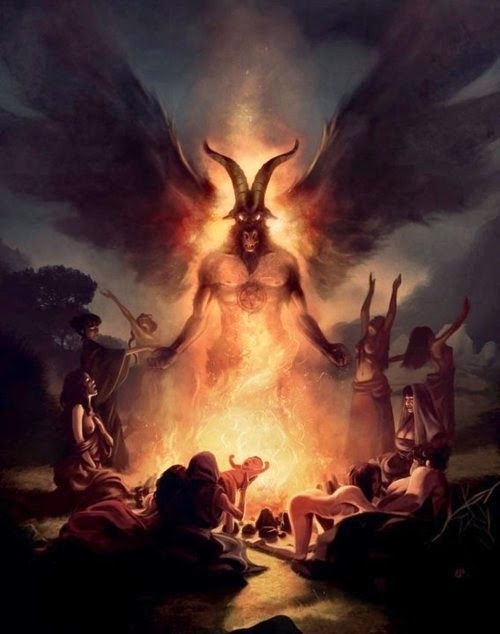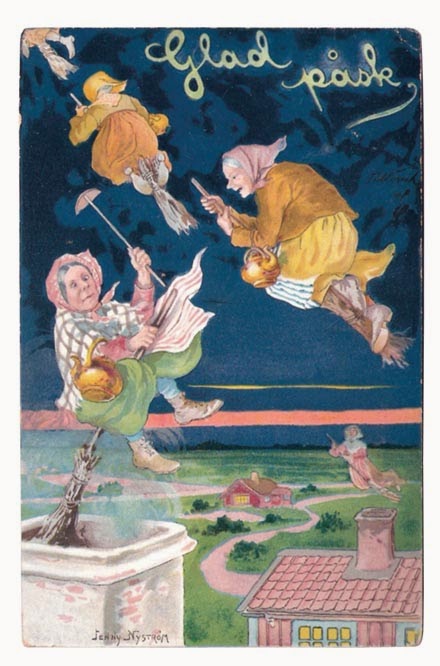
The Hag is astride,
This night for to ride;
The Devill and shee together:
Through thick, and through thin,
Now out, and then in,
Though ne’r so foule be the weather.
Robert Herrick (1591 – 1674)
According to Swedish folklore, the Thursday before Easter (skärtorsdagen in Swedish) is the day of the year for all the evil easter- witches (Swedish påskkärringar) to fly on their broomsticks to Blåkulla to have their annual feast with the Devil. The Devil was dressed “in a grey Coat, and red and blue Stockings: He had a red Beard, a high-crown’d Hat, with Linnen of divers Colours, wrapt about it, and long Garters upon his Stockings”. The Devil then “would go with them that he liked best, into a Chamber, where he committed venerous Acts with them: and this indeed all confessed, That he had carnal knowledge of them, and that the Devil had Sons and Daughters by them, which he did Marry together, and they did couple, and brought forth Toads and Serpents.”
The idea of Easter Witches is said to originate from the 17th century witches. The witch trials had its peak during 1660-1670 in Sweden and hundreds of women were executed accused of attending the Devil’s feast. Blockula plays a major part in the witch-hunts described in Joseph Glanvill’s 1682 work, Sadducismus Triumphatus. This book detailed Blockula in an Appendix entitled: “True Account of What Happen’d in the Kingdom of Sweden In the Years 1669, 1670, and upwards: In Relation to some Persons that were accused for Witches; and Tried and Executed By the King’s Command”.
 In order to prevent broomsticks from being used by a witch at this time of year, people used to hide them. People also used to light fires, close off their chimneys and sometimes fire guns into the air to scare off the witches. To this day you can sometimes see remnants of this when people in Sweden set off their Easter firecrackers. Nowadays Swedish children dress up in rags and old clothes, too big skirts and headscarves, paint rosy cheeks and freckles in their faces, carry a broom and go trick or treating in their neighborhood, handing out paintings and drawings in the hope of getting sweets in return.
In order to prevent broomsticks from being used by a witch at this time of year, people used to hide them. People also used to light fires, close off their chimneys and sometimes fire guns into the air to scare off the witches. To this day you can sometimes see remnants of this when people in Sweden set off their Easter firecrackers. Nowadays Swedish children dress up in rags and old clothes, too big skirts and headscarves, paint rosy cheeks and freckles in their faces, carry a broom and go trick or treating in their neighborhood, handing out paintings and drawings in the hope of getting sweets in return.External link:





